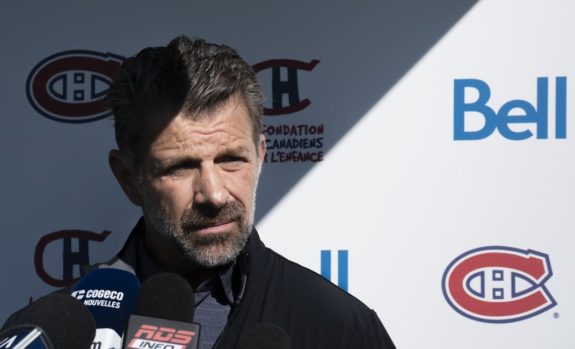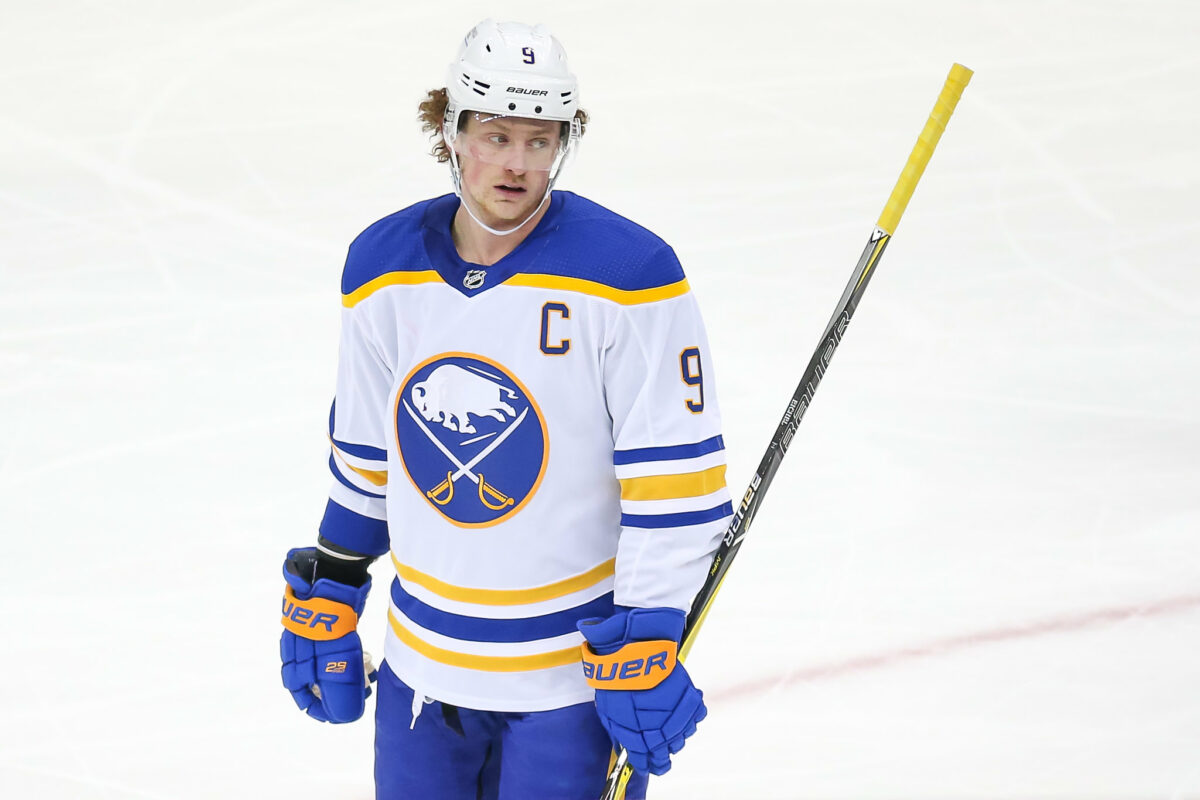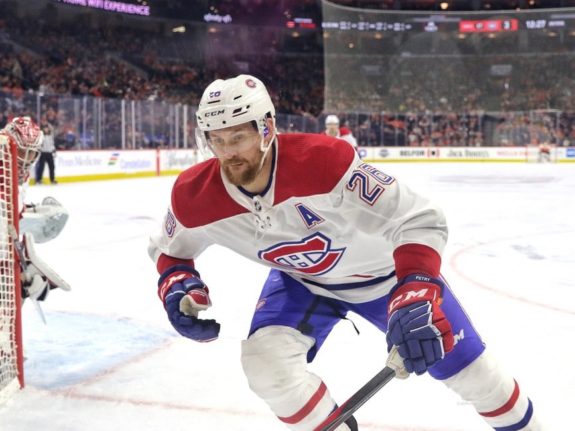The Montreal Canadiens’ 2021-22 season has begun with a 3-10-0 record to start the season, one of the worst in the team’s 112-year history, and there are no signs it will get any better as the season wears on.
The Canadiens need a new plan to move ahead — some have even said they need a new vision — but does that mean it’s time to do a complete rebuild by trading away everyone and starting from scratch? No, general manager Marc Bergevin has given the Habs a solid young base headlined by Nick Suzuki, Cole Caufield and Alexander Romanov to begin from. However, whoever is chosen to guide the franchise moving forward — Bergevin or someone else — has their work cut out for them.
All signs point to Bergevin likely believing his retool was almost done — this season was to be a transition into contender, but several injuries, the loss of captain Shea Weber and players defecting via free agency have meant that the team will not become what Bergevin had hoped for. It is a transition year, but not the transition expected, so the question now is how to use this team’s setback to move forward.
Bergevin and the Retool Plan
In his decade at the helm, the Canadiens have made the playoffs six times, and have won six playoff series, which includes an Eastern Conference Final appearance in 2014 and a Stanley Cup Final appearance in 2021. However, 10 years later, the team is essentially back is a similar situation to when he began, with some good young players but surrounded by an aging, injury-riddled core of veterans.
While Bergevin seems to have team owner Geoff Molson’s confidence to continue as general manager, which includes trades and signings, it can still be detrimental to not have leadership solidified moving forward. As a lame duck in his final season, there is a serious concern that he will be leaving the team. While it is not expected that he makes any detrimental desperation moves in an attempt to “save his job” or make the playoffs, what his remaining in the position does is quite possibly delay the next step in the team’s development.

As team owner, Geoff Molson must step in and force a decision. If Bergevin is unwilling to sign the contract offer that has been rumored to be on his desk, then Molson must move on. The franchise needs a plan that looks beyond this season and the sooner Molson begins the search for that next general manager, the sooner that person can assess the current assets and begin to put that plan to build this franchise into a perennial contender.
What is a Contender?
There is no one perfect answer to this question, but one thing all contenders have in common is that they have adequately filled 10 positions in their system with a mix of elite talent and productive complementary players.
Those 10 positions are a clearly defined top-six forward group as well as an excellent two-way center to pivot the third line. On defence, a mobile top pair of defenders who can play well over 25 minutes a night when necessary, a third defenceman that can play heavy minutes in addition to that mobile, puck-moving style and fill in on special teams to provide rest to the top pair. Finally, a starting goaltender who can be relied upon to control the pace of a game when his teammates are having a difficult night.
Some teams build that via the draft, others with trades, but the successful ones use both, yet do so by building onto a team identity. The Canadiens had one of a hard-working team that used speed and volume shooting to win games. The lack of elite talent or the necessary depth in those 10 key positions meant they haven’t reached contender status.
The Canadiens’ New and Improved Rebuild Plan
Whoever takes the helm will begin with a solid prospect pool, but one that lacks star power. They would hold 11 draft picks in the upcoming 2022 Entry Draft, which includes five picks in the top 90. But also, they will need to deal with repairing a flawed NHL roster that has also spent to the salary cap limit.
Related: Canadiens Prospect Update
There is no need to sell off everyone, and even if there were, the contract status of the majority of the roster would make it difficult. Most of the roster is under contract for several seasons, and while players such as Tyler Toffoli, Mike Hoffman and Jonathan Drouin are signed to reasonable contracts and could have good trade value, the fact they have one or two seasons remaining after this season makes it difficult to move them.
Step One
Let the season play out. There is no need to actively tank the year as that could end up creating a toxic atmosphere. One look at how the Buffalo Sabres have dealt with their rebuild — which led to team captain Jack Eichel eventually demanding a trade — and it’s easy to see how losing over a long period can cause friction in a dressing room, especially one filled with veteran players.

Having so many injuries to key players has hurt the Canadiens; however, this is an opportunity to allow those veterans as much time as possible to recover fully. There is no need to rush anyone back to the roster. For example, Carey Price is returning to the team, but there is no timetable set for him to dress for a game. Allow him as much time as needed to get his health in order, and while that does hurt the team’s record this season, in the long run, it could help his body and mind recover and prepare for the next few seasons.
Use these roster openings to focus on giving the youth in the organization the time on ice in the roles and situations they were drafted to eventually fill — providing Nick Suzuki the top-line center role, Alexander Romanov being given more allowance to play his style of up-tempo hockey and allowing Cole Caufield to build confidence in the American Hockey League (AHL).
Step Two
Make more room and open up key roles on the NHL roster for your youth to fill in and use to develop their games further by selling off the expiring contracts. By moving out defencemen such as Ben Chiarot and Brett Kulak, it is possible to add future assets in picks or prospects, but it also makes it much easier for head coach Dominique Ducharme to provide Romanov more ice time and place him into a more prominent role to help him develop.
A general manager shouldn’t want to sell off every expiring deal, however, as it could deplete the Laval Rocket roster of it’s top players in a season where they are poised to compete for the AHL championship. So, holding onto someone like Mathieu Perreault is an easy decision; the difficult one is if you shop Artturi Lehkonen.
He is a restricted free agent at the end of the season and has proven himself to be an excellent two-way winger who could be valuable to a contending team. His value could be as high as a first-round pick, and if that were offered it would be hard to turn down, especially due to the depth the Canadiens’ prospect system has on the wings.
Step Three
This may seem like it should be step one but, the current roster needs to be dealt with first. Once that is done, choosing the best identity moving forward will be vital to future success. It will also define the team, and decide who and what to target in the draft, on the trade market as well as in free agency.
For the Canadiens, the best way to build into a contender is to emulate the identity of their past championships, a team built on “firewagon hockey.” That means someone has to lead change in the Habs’ team structure philosophy. Placing more emphasis on mobile, puck-moving defensemen like Jeff Petry, to take advantage of team speed and transition, is vital to allowing the Canadiens to play into that identity.

This is where the importance of finding a new vision, a new voice, becomes paramount for professional hockey’s oldest franchise. The current plan of building a roster designed for success in the playoffs, but not one that will have regular-season success, is unsustainable. You need to find balance as a team needs to qualify for the playoffs first and foremost.
This lost season finds the Canadiens’ future in the balance. Unless Molson forces the situation and demands a plan that fits into the new NHL, it is possible the Canadiens could find themselves without an identity, and as a team could find itself unable to make the moves necessary to move forward. What is old is new again, and the plan to move to firewagon hockey again is not only necessary, but long overdue.